Smeg Semi Automatic Espresso Machine – the most stylish espresso machine on the market?
The Smeg Super Automatic Espresso Machine is the most beautiful model on the market. As a barista, I wanted to see if this boasts substance as well as style.
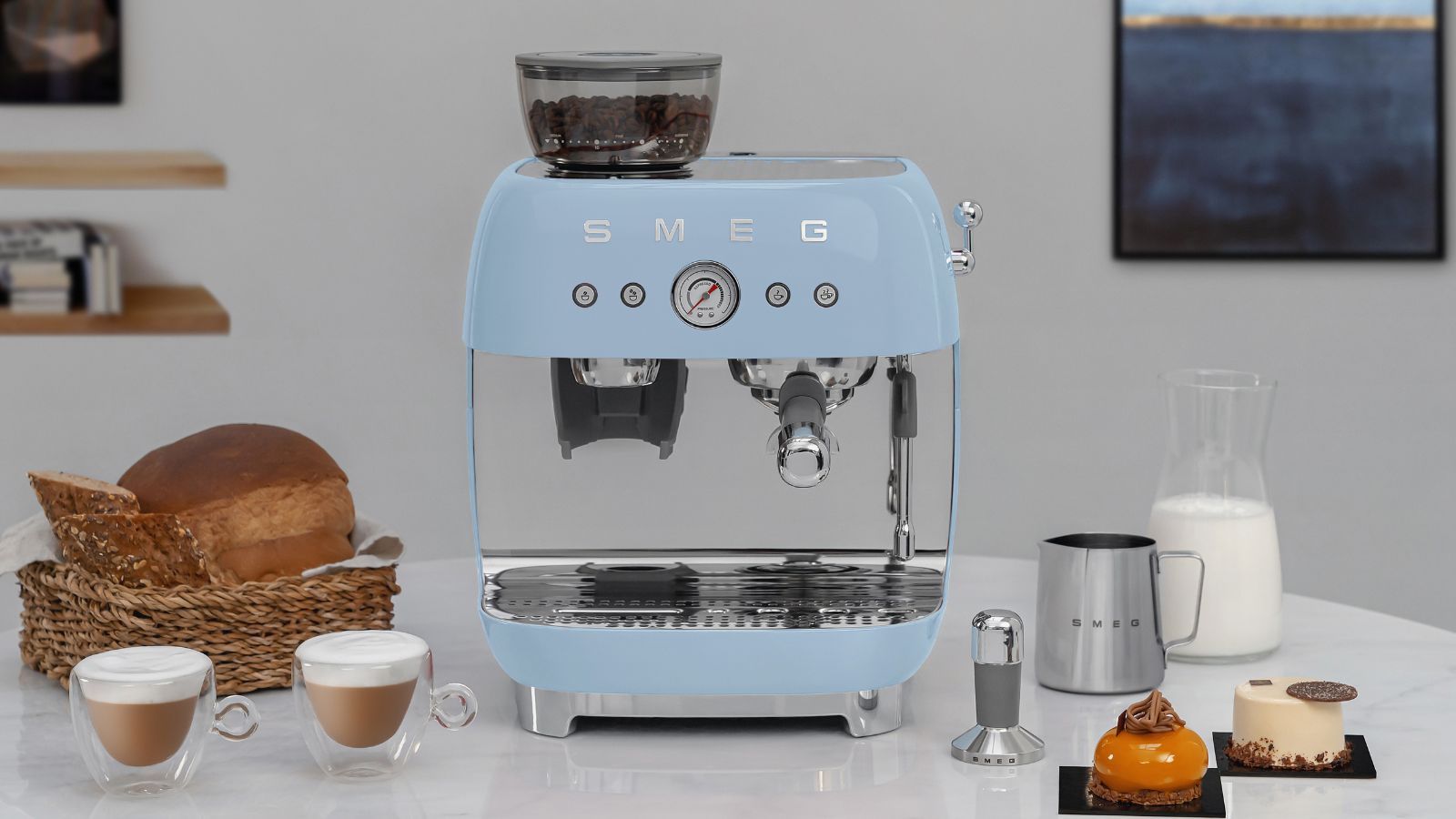
The Smeg boasts style and simplicity, making it perfect for those new to speciality coffee. it's bold and bright, but a little expensive. you could get similar results for $300 less, but it might not look as pretty.
-
+
Easy to use
-
+
Available in a range of colors
-
+
Makes a decent cup of coffee
-
+
Great storage options
-
+
Well-designed grinder
-
-
Large footprint
-
-
Expensive
-
-
Lacks customization (for experts)
-
-
High maintenance to keep clean
You can trust Homes & Gardens.

I’ll start by stating the obvious: this is one of the most eye-catching espresso machines on the market. It’s classic Smeg style – all chrome, color, and polished, glossy finishes.
I’ve been admiring this for months. It certainly looks the part, but, as a former barista, I was keen to find out whether it was as substantial as it is stylish.
The Smeg has some serious competition in the best espresso machine and it’s done a good job. I made some nice coffee with it and found it really straightforward to use. However, if you’re looking for technical perfection, there are better places to spend your money.
Specifications
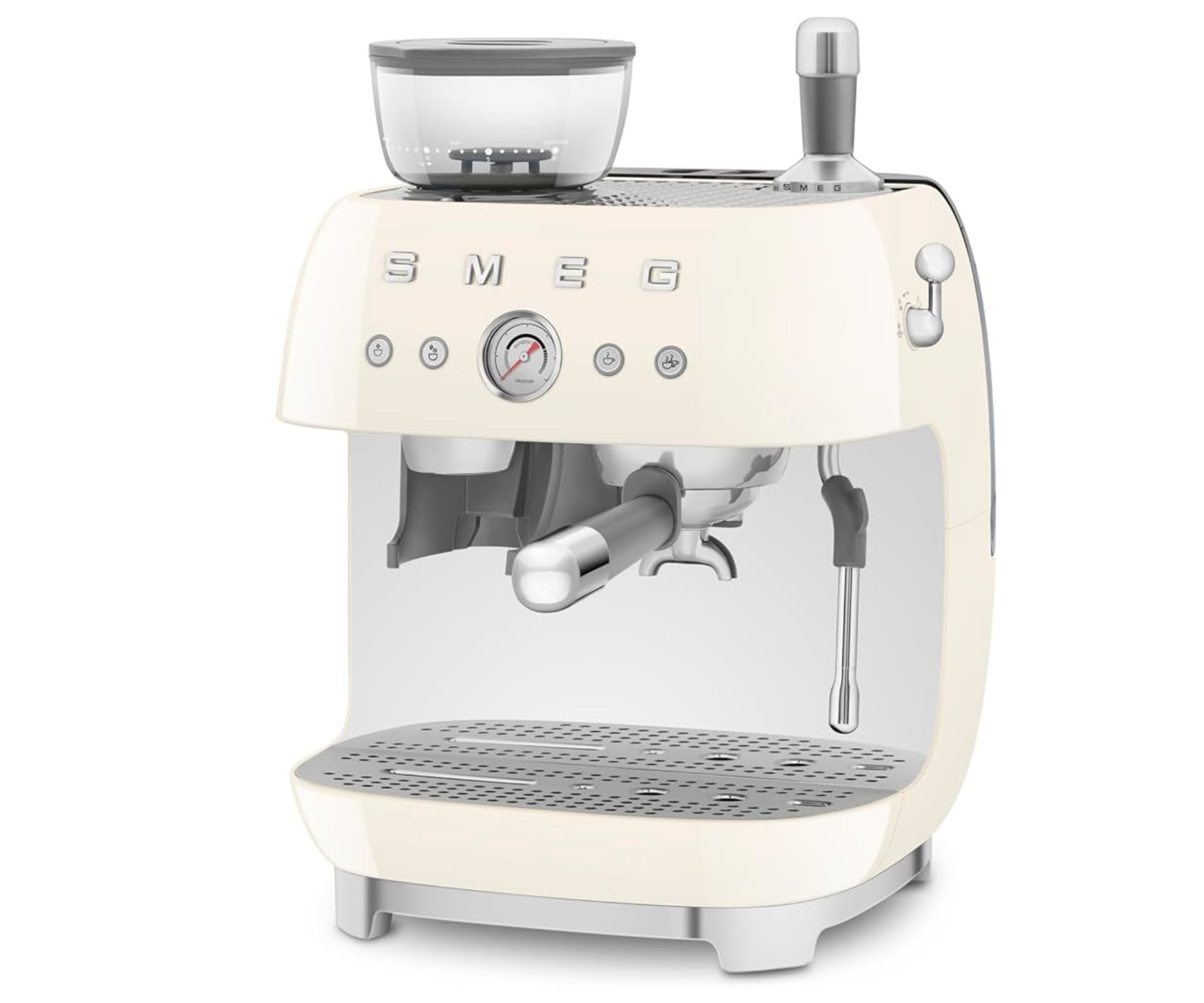
| Type | Manual espresso machine |
| Water tank capacity | 2.5-quart |
| Bean hopper capacity | 8.8oz |
| Pump pressure | 20 bar |
| Dimensions | 17 x 17 x 13 inches |
| Included | portafilter, milk jug, filter baskets, cleaning accessories |
| Grind settings | 15 |
| Colors | black, cream, white, green, blue, red |
Unboxing

Some espresso machines come with lots of fiddly extras, but Smeg has kept things simple. Once I had taken the machine out of its (mostly recyclable) packaging, it looked almost ready to go.
The Smeg comes with four different portafilter baskets, a weighty, Smeg branded portafilter, a premium Smeg tamper, a Smeg stainless steel milk frothing jug, and some cleaning accessories.
To get started, I screwed the airtight bean hopper into place. In true Smeg style, this clicks in a wonderfully tactile way when switching between grind settings. It also has a seal and UV protectant plastic, ensuring any beans left in the hopper retain their best, fresh flavors.
The capacious water reservoir lifts off from the back, which makes it easier to fill than other machines. Whilst it’s not awkward to hold, it doesn’t have the neat handle that some De’Longhi machines do. This means you need to grip both sides, which can make it hard to turn the tap off without spilling or wasting water, but it’s better than having a fixed reservoir.
Design expertise in your inbox – from inspiring decorating ideas and beautiful celebrity homes to practical gardening advice and shopping round-ups.
Who would it suit?

Smeg puts style first with this espresso machine. It’s available in a range of colours, perfect for everything from modern, monochrome kitchens to colorful, cozy farmhouse interiors.
Aside from the obviously beautiful aesthetics, this is a huge machine. It demands a lot of space on the countertop, so you’ll need to clear some room. It's also heavy, so you’ll want to leave it on display (for the sake of your back and your cupboards).
What is it like to use?
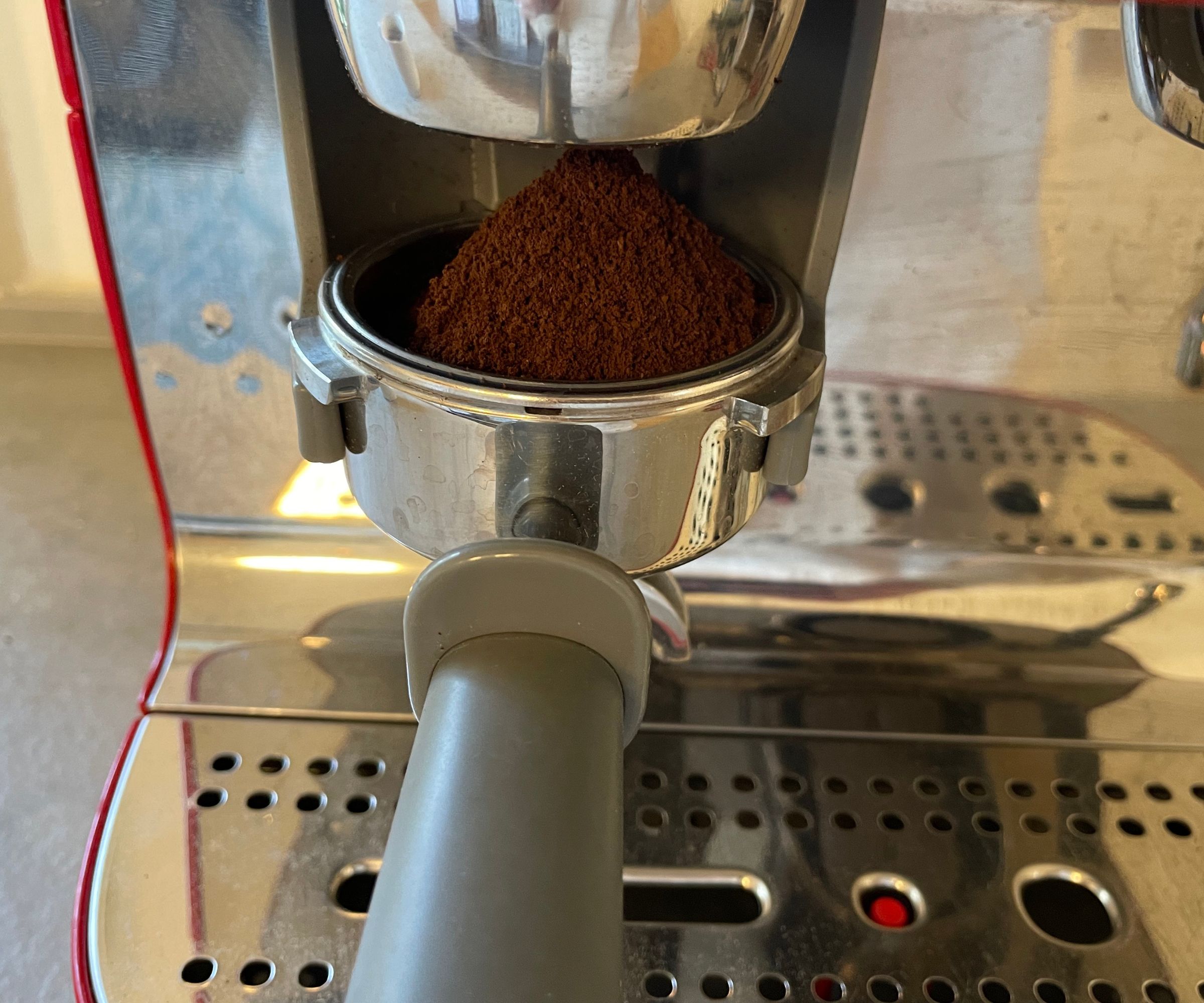
If you’ve never owned an espresso machine before, this is a good model for beginners. It’s easy to use, has obvious controls, and two steamer settings. It’s quite basic, both for grinding and coffee settings, so if you aren’t going to get overwhelmed by dials and gauges.
Whilst simplicity suits most of the coffee market, if you want to get technical, you might find this a little limiting. The grinder and its 15 settings are a great example of this. In our buying guide for the best coffee grinders on the market, the smallest range we have is 30 settings and our team of experts were critical of that small range. As you start to tune into coffee, you might want more from your espresso machine.
Test 1: espresso
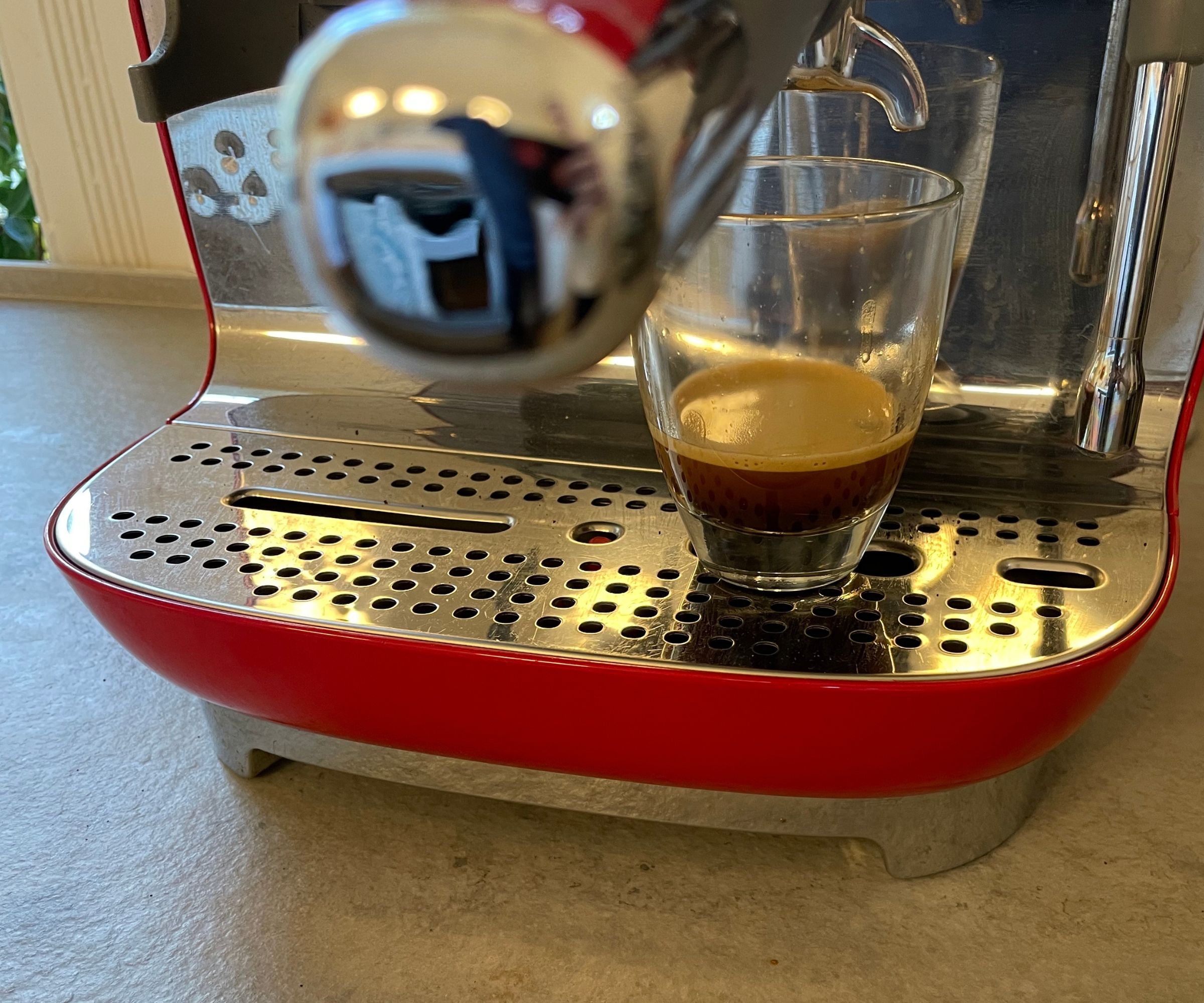
I started with the basics. If a machine can make a good espresso, it’s done most of the hard work. After warming up the machine (which took about five minutes), I ground my coffee, on setting 6, into the portafilter. There’s a neat holder fitted onto the machine, so you can leave the machine to dose and grind. I had a look at the coffee grounds and they were all consistent — it was a really impressive.
Locking the portafilter into place was easy and, after that, all I needed to do was place my espresso mug underneath. The brew head sits quite high up, so I did see some coffee splashing onto the stainless steel around my mug, but the espresso itself looked great. This had a thick, hazelnut crema and felt like a good temperature. I gave it a taste test and this was pretty good. The flavors were evenly extracted and subtle. It was a little flatter than some of the best espressos I’ve made, but I think the average coffee drinker really wouldn’t pick up on this. I’m being a pedant, because it’s my job to be picky.
Test 2: Americano

The next test is Americano. I tend to use quite tall glasses for my Americanos: I like to see my coffee and I think the aesthetics are generally nice and elegant. However, the slightly awkward brew head makes it difficult to fit tall glasses (and tall travel mugs) underneath. I had to decant my Americano from one, more shallow mug, into my tall Americano glass. This won’t be a problem for most people, but is worth noting if you have two glasses and mugs.
You have to make the Americano yourself. By that I mean the espresso comes out under the brew head and you get your hot water from the steam wand. This means that you have to be a little bit more involved in the process compared to espresso machines (like De'Longhi's La Specialista Maestro) which can dispense hot water out of the brew head when water is coming out of the steam wand. The water comes out at quite a high pressure so will splash coffee at the side of your mug. This looks a little messy but as it fills up you won’t notice the splashes.
The coffee itself was nice, well extracted and light. I would’ve liked it to be a little warmer but if you run the steam wand for longer you will get hotter water out. This was the first time that I was using the steamer, so I think a lot of the water cooled in the stainless steel wand.
Test 3: cappuccino

I used both dairy and plant-based milk to froth both latte and cappuccino milk. This was largely a success, even though the milk steam wand is a little basic. To texture milk, you place the stainless steel jug under the steam wand and choose either the lighter or thicker settings. You'll need to position the jug and stop the steam from running, so, aside from choosing the settings, the milk texturing will be dependent on your skill. If this isn’t intuitive to you, you will learn quickly because burnt milk, tastes horrible.
A manual steam wand is a common feature of espresso machines, so you'll probably need to learn how to froth your own milk. However, I think it’s tricky for beginners, especially when there aren’t many automated settings so I’d recommend taking some time to work out. If that sounds like a lot, there are some good milk frothers on the market that you could invest in.
Both my oat and dairy milks were warm, sweet, and smooth. They complemented the espresso really nicely, so I was pleased with the results of the Smeg. The steam wand can move through 360 degrees, so is really flexible to a range of angles, making milk texturing as easy as possible.
Cleaning, storage, and maintenance
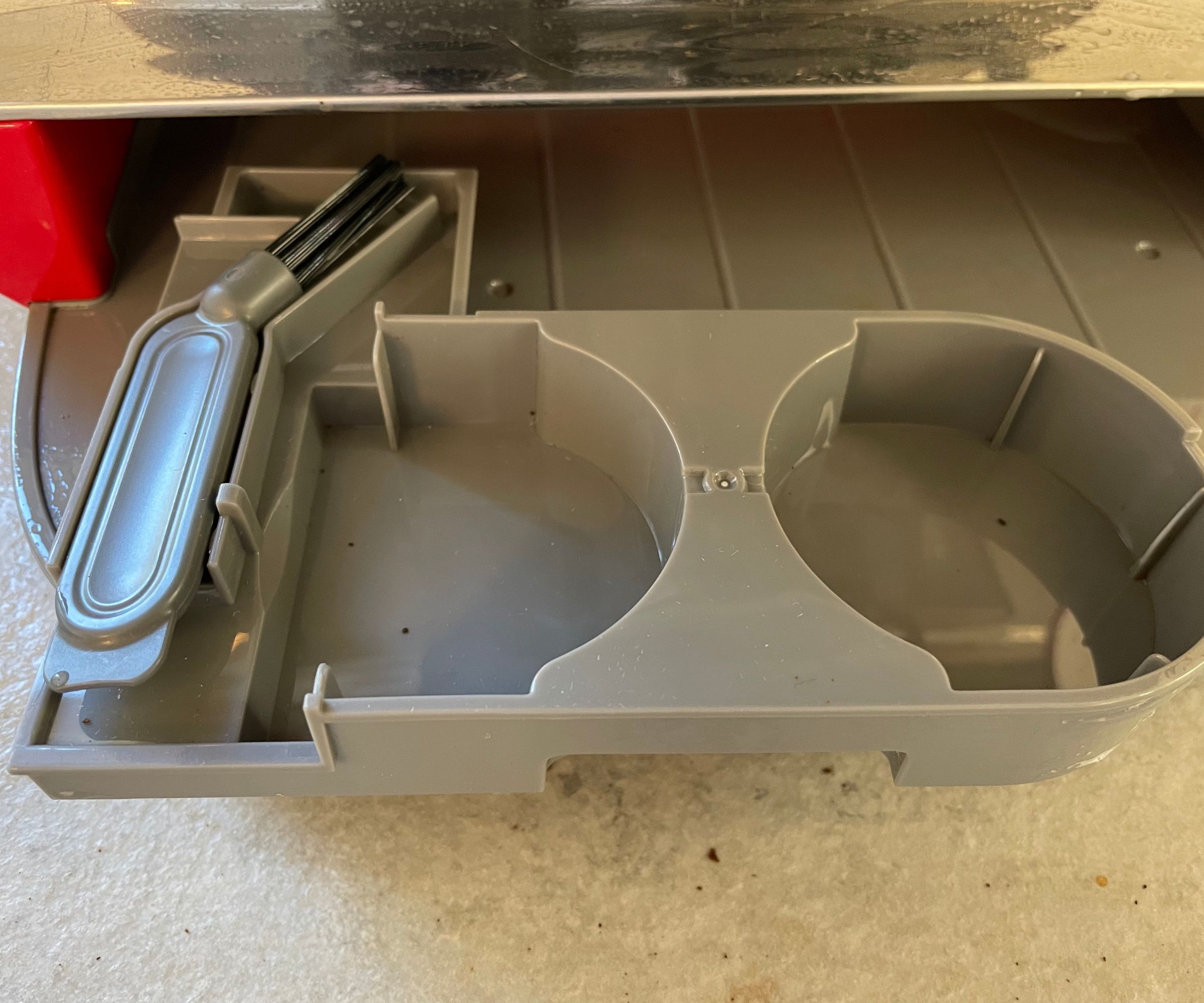
As you might expect with chrome and stainless steel, this is quite a high maintenance machine. Paired with coffee splashing from the brew head, I found myself almost constantly having to wipe down the Smeg to keep it sparkling. The brew head also drips a bit, so will leave coffee marks on the brew tray. I locked my portafilter in tightly and still struggled with this issue, so just make sure to include it in your regular maintenance routine. It’s worth taking time over cleaning, because this is a big machine. It will draw attention in your kitchen and you will only want that to be the good kind of attention.
I was impressed with how considered Smeg have been with their storage options. When you slide out the drip tray, you’ll reveal a neat storage solution hidden under the machine. Here, you can keep brushes and spare portafilter baskets. This stops you cluttering up drawers with coffee paraphernalia and reduces the risk of you losing an all-important part.
How does it rate online?
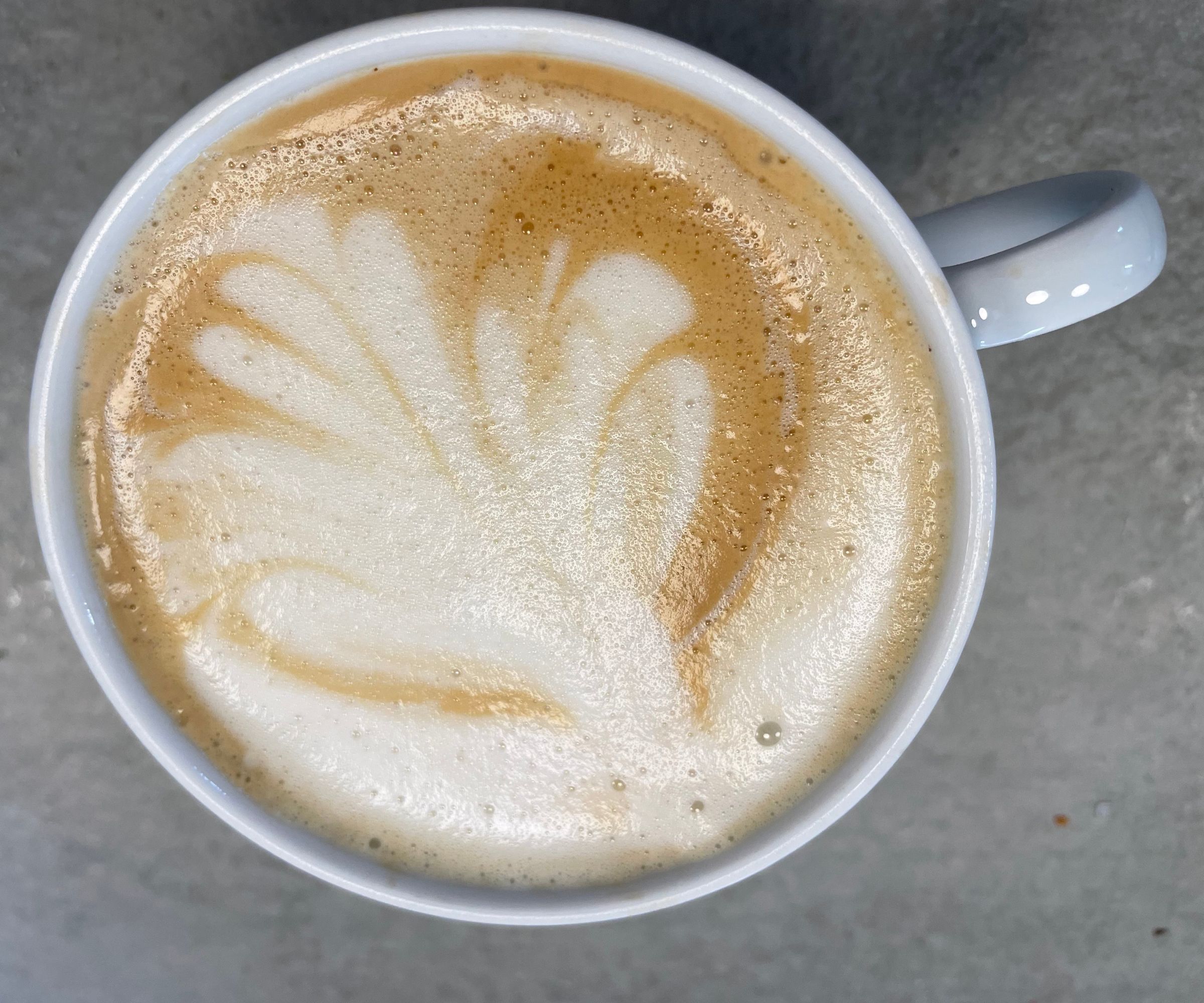
Reviews for Smeg’s latest espresso machine all approve. It’s well received by customers and experts alike. People often emphasised that this is tailored towards beginners rather than really technical coffee drinkers, but I think that’s a good thing. Speciality coffee is becoming more and more accessible, so it seems only natural that Smeg change with the times.
As a machine which appeals to beginners, it’s easy to find features both celebrated and criticised. For example, the steam wand comes with two settings. Some reviewers said that this would be helpful for beginners, others felt that it wasn’t automated enough. Some others felt that it wasn’t manual enough, so you’ll need to know where you sit in the coffee maker market to know whether you need a little more help, or a little more freedom.
Whilst people loved the aesthetics of the Smeg (although there are some who it doesn't appeal to), almost everyone said that they thought it was expensive for a basic espresso machine. They also reiterated that tho is pretty huge on the countertop, so you’ll need to be ready to craft a coffee nook around it.
How does it compare?

I think it’s important to make two comparisons here. The first is to Smeg’s other, smaller espresso machine and the second is to Breville’s Bambino Plus (a good espresso machine if you’re a beginner and if you plan on getting technical further down the line).
Smeg’s Retro Espresso Machine has a similar aesthetic. It comes with the same curved, colorful, chrome finish, but this is a much smaller model. To cut down on size, Smeg removed the integrated grinder (so you’ll need to buy one separately) and made everything a bit shorter – most notably the steam wand. Having to grind separately takes a bit more time and effort, but gives you the option to get more technical with your coffee grounds and to save on countertop space. Buying two appliances separately will increase the cost of your machine, but for those who care about grinding, or who already own a grinder even, this could be worth it.
Both Smeg machines have low brew heads, so won’t necessarily brew coffee straight into your travel mug. Both are also imperfect at steaming milk. The smaller Smeg model has automatic steam functions, but these can leave milks a little bubbly, especially if you drink plant based milks. There's also the inescapable fact that they're much more expensive than they should really be.
If you liked the idea of a more technical espresso machine, there are plenty of excellent models in our buying guide. However, some of these can seem a little daunting to novice coffee drinkers. Breville’s Bambino Plus has the ability to get really technical, but the option to keep things really simple. It makes an excellent cup of coffee, steams milk automatically (and perfectly), and still has a sleek and stylish stainless steel finish. The Bambino Plus looks more functional, but stainless steel finishes can look really smart in plenty of kitchens.
Unlike the Smeg Semi-Automatic, this doesn’t come with a grinder, so you will need to buy one separately. However, this is still one of the cheapest machines on the market, so you'll have some money left over from buying the Breville and a good grinder than you would if you bought the Smeg Semi Automatic.
Should you buy it?
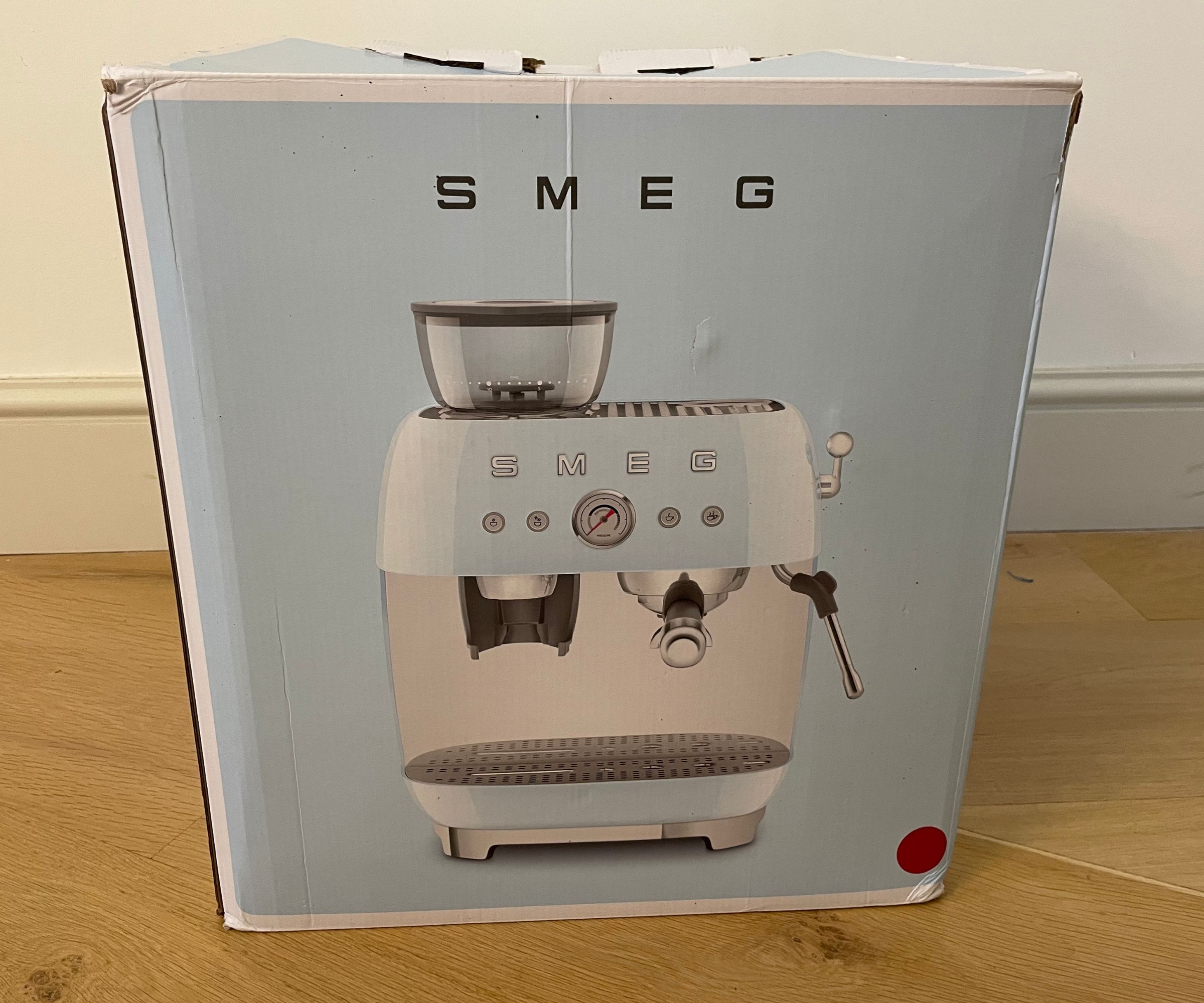
If you put style first, you should absolutely buy this espresso machine; it’s striking. It’s beautiful and reasonably capable. However if you plan on becoming the next best barista in town you’ll need a machine which is a little more capable. I’ve tested lots of brilliant machines at a similar price point and they’re included in our buying guide for the best espresso machines. Have a look at those if you don’t think this is for you.
How we test espresso machines
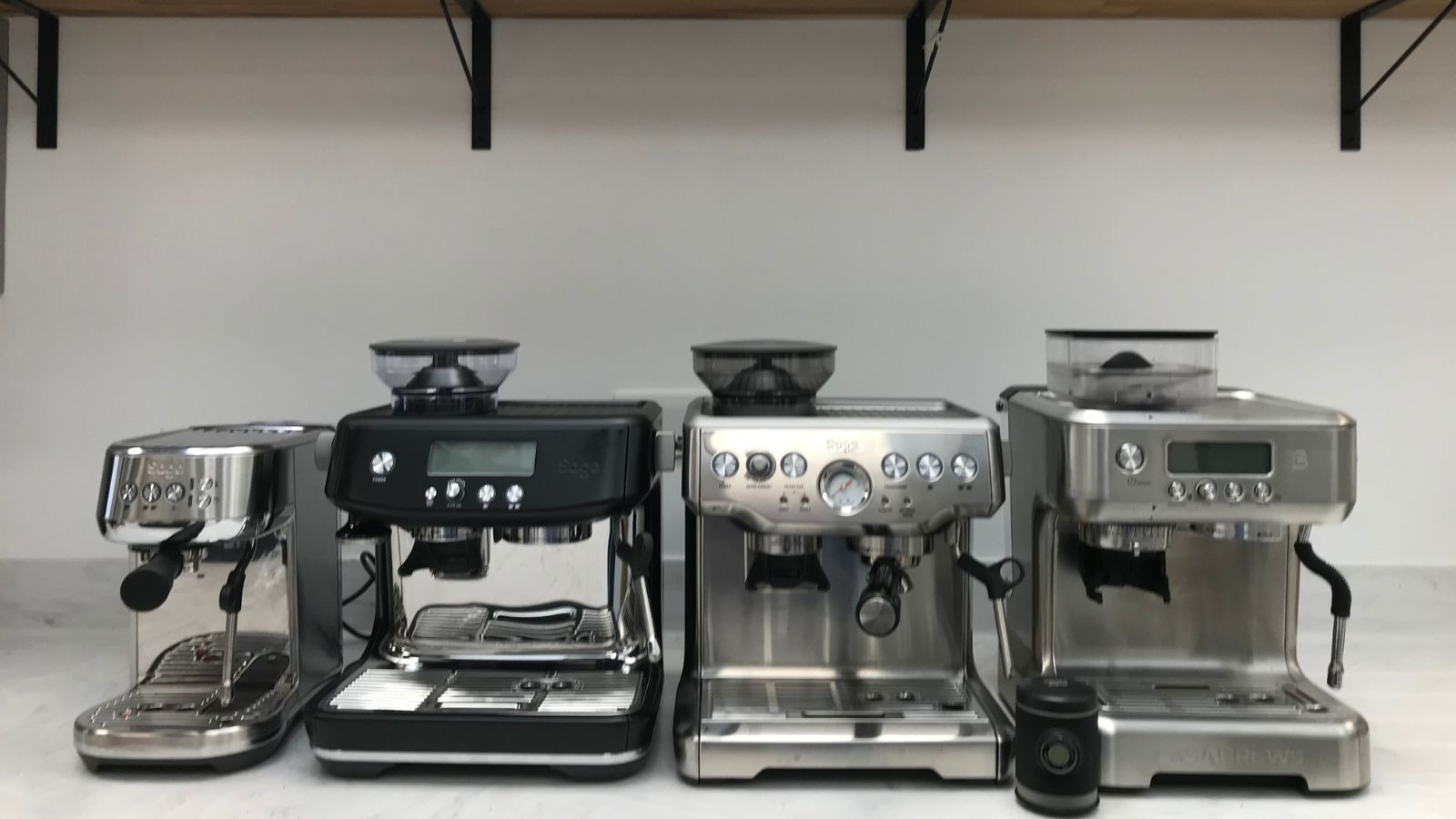
At Homes & Gardens practicality before anything when we do our reviews. That’s why we have a team of dedicated experts who test every product we recommend to you. Before we call a model into our test kitchen, we do a deep dive, reading around and researching everything we need to know about an espresso machine.
Then, our team of experts will carry out their in-person tests. We put every espresso machine through our series of standardised tests as well as checking any special features and functions. We'll also make notes on taste, performance, and usability leaving no stone and unturned. That means when machine arrives at your door, you know exactly what to expect. If you’d like to find out more about how we test you can visit our dedicated page.

Laura is our eCommerce editor. As a fully qualified barista, she's our expert in all things coffee and has tested over thirty of the best coffee makers on the market. She has also interviewed Q-Graders and world-leading experts in the coffee industry, so has an intimate knowledge of all things coffee. Before joining Homes & Gardens, she studied English at Oxford University. Whilst studying, she trained as a master perfumer and worked in the luxury fragrance industry for five years. Her collection of home fragrance is extensive and she's met and interviewed five of the world's finest perfumers (also known as 'noses'). As a result of this expansive fragrance knowledge, she always puts quality and style over quantity and fads. Laura looks for products which have been designed simply and with thoughtful finishes.